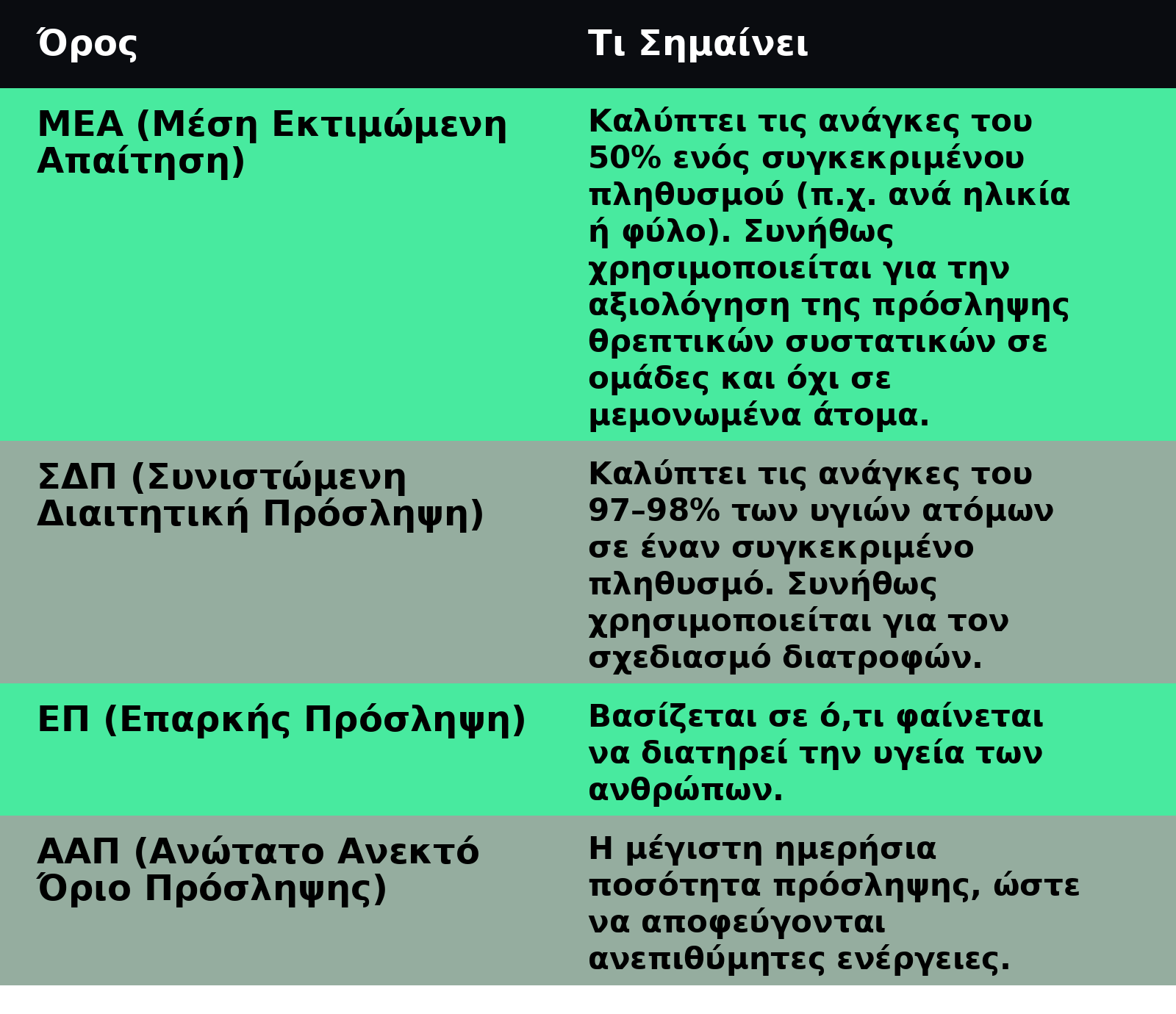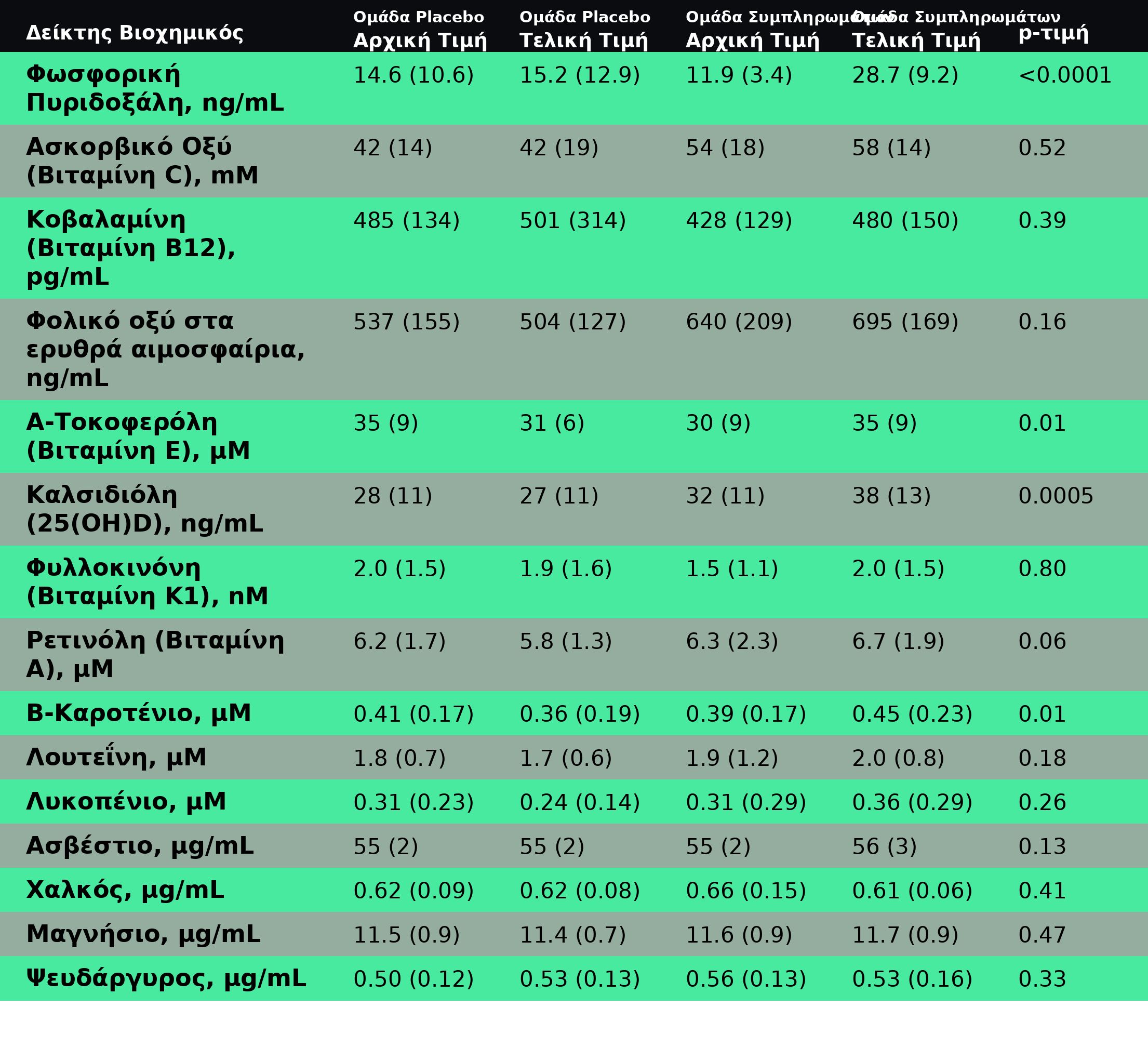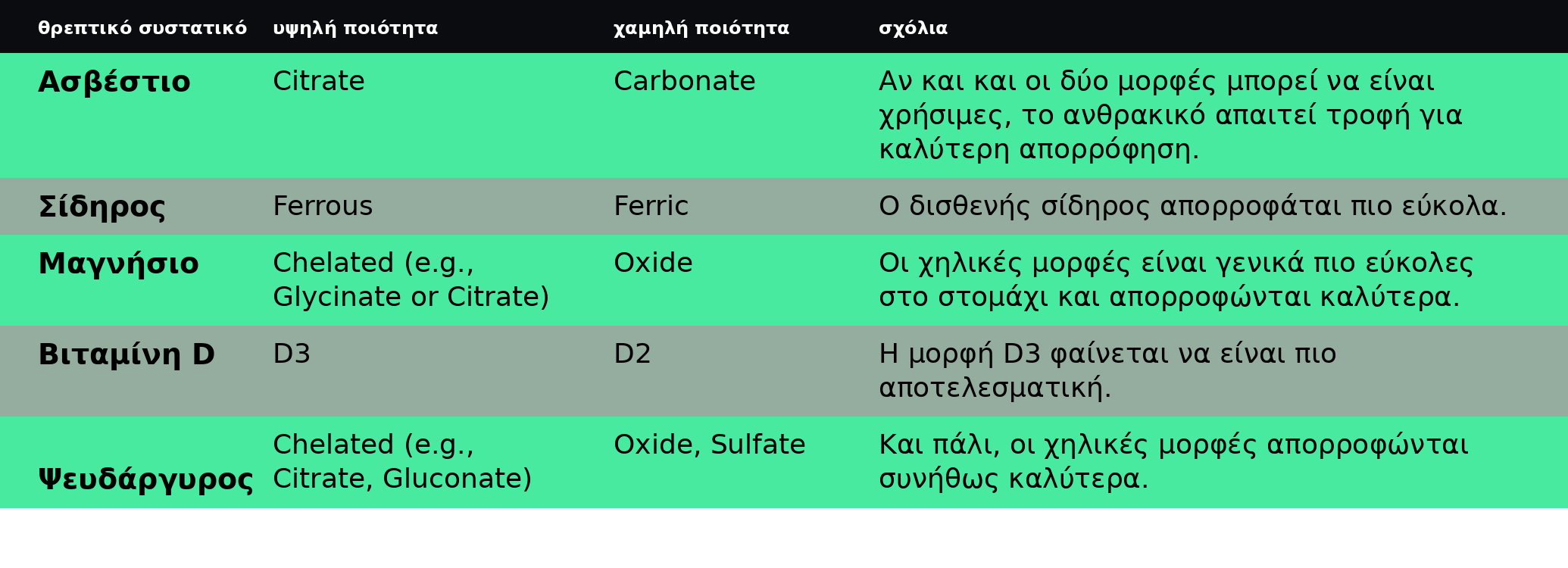What science says and what you need to know
Multivitamins are a topic of intense debate. Some believe that a basic multivitamin is the minimum one needs to maintain their health. Others argue that it offers no real benefits and might even be harmful.
With so much research and analysis on the subject, it’s only natural to wonder: is there a middle ground? Does it make sense to take a multivitamin? And if so, what should one be careful about?
In this article, we’ll take a clear look at what we currently know about multivitamins and clarify whether it’s worth incorporating them into your daily routine or not.
Let’s break it down…
What Is a Multivitamin?
According to the U.S. National Institutes of Health (NIH), a multivitamin is defined as any supplement that contains at least three vitamins and minerals, but no herbs, hormones, or pharmaceutical substances.
In this article, we focus specifically on multivitamin formulations that combine essential vitamins—such as A, D, and C—with minerals like calcium and zinc.
As the definition suggests, a multivitamin can include nearly all essential micronutrients or just a selected few. That’s why the first key point to remember is that multivitamins are a very broad category. There is no universal standard for what they must contain, and regulations governing their composition are minimal.
Limitations in Scientific Studies
It’s also important to acknowledge that research on multivitamins comes with certain limitations—and that’s to be expected. For example, if a patient is deficient in vitamin C, researchers will typically study the effects of different doses of vitamin C specifically—not the impact of a general multivitamin that happens to contain a small amount of it.
This is one reason why many studies on multivitamin supplements produce “mixed” or inconclusive results. The data isn’t always definitive, and interpretations are often made with caution.
Are People Deficient in Micronutrients?
The truth is that, in many cases, yes — but the issue isn’t that straightforward. In the United States, health organizations assess the population’s nutrient adequacy using the well-established Dietary Reference Intakes (DRIs).
This system provides guidelines to help determine how much of each nutrient an individual needs per day to meet their nutritional requirements without exceeding safe limits.
Below, we’ll break down some of the key terms used in this system and explain what they really mean for us and our diets.
Ideally, How Should We Meet Our Micronutrient Needs?
The ideal way to meet our daily vitamin and mineral requirements is through food. In developed countries, the variety and availability of food typically allow most people to obtain essential micronutrients without much effort. As overall calorie intake increases, nutrient intake usually rises as well.
However, this is not the case everywhere. In many developing countries, access to nutritious food is limited. In such contexts, getting enough vitamins and minerals isn’t a matter of optimization—it’s a matter of survival. Food fortification or the use of supplements becomes not just beneficial, but essential.
Global trends in national food supply (1961–2011)
Micronutrient Availability and Deficiency Trends Worldwide
(A) Available daily energy per capita, (B) Micronutrient Density Index, and (C) Estimated Prevalence of Inadequate Micronutrient Intake — tracked for the global population and for seven regional groupings. The trends are based on five-year rolling averages. The color-coded triangles represent regional values for the year 2011 and account for the contribution of food fortification.
The acronym “WCANA” refers to Western and Central Asia and Northern Africa. “High Income NES” includes high-income countries not specifically listed elsewhere (e.g., Australia, Canada, New Zealand, the United States, and Western Europe).
Source: Beal et al. (2017)
Can Deficiencies Occur Even in Wealthy Countries?
Even in countries with a high standard of living and greater access to food, micronutrient deficiencies are more common than most people think. In Europe, for instance, vitamin D deficiency is widespread, though rates vary significantly between countries. Denmark and Sweden have been found to have low selenium levels, whereas Finland does not—possibly due to different national food fortification policies.
In the United States, more than 25% of adults fail to meet the Estimated Average Requirements (EAR) for key nutrients such as vitamin A, D, E, calcium, and magnesium. Additionally, even the same type of food can vary in nutritional value depending on factors like soil quality and agricultural practices.
In simple terms, even if your diet seems relatively diverse, you may still have mild or more significant nutrient deficiencies.
Worried About Potential Deficiencies? Start by Tracking
If you suspect something might be missing from your diet, the first and most helpful step is to monitor your micronutrient intake. Apps like MacroFactor use reliable databases (such as the USDA and NCCDB) to give you a detailed overview of the vitamins and minerals you’re consuming.
For more accurate results, it’s recommended to log generic food types rather than branded products, as the former typically contain more complete nutritional information.
In the next section, you’ll find a practical table highlighting which nutrients most often require attention—and which ones are less likely to be lacking.
How to Read the Table Above
The table provides a general overview of how much attention each nutrient might require. Its purpose isn’t to show how “dangerous” a deficiency or overdose could be, but rather how likely it is to occur in real life.
In other words, it helps you identify whether you’re more likely to fall short on a particular nutrient—or perhaps overconsume it—so you can focus your attention accordingly.
What Is the Role of a Multivitamin?
One of the most important things to clarify is that multivitamins are not medicine. While targeted vitamin intake can resolve serious health issues in the case of a deficiency, that doesn’t mean general multivitamin use has therapeutic effects. They shouldn’t be treated as a form of “treatment.”
Multivitamin supplements can be helpful when there’s a specific nutrient deficiency that isn’t already being addressed through a more targeted intervention. On the other hand, using multivitamins to manage diseases unrelated to nutritional deficiencies has shown little to no benefit. That may explain why many studies—including a well-known publication in JAMA—conclude that multivitamin use doesn’t necessarily correlate with longer life expectancy.
However, that doesn’t mean nutrient deficiencies are harmless. In fact, lacking essential vitamins can be dangerous and have a direct impact on health.
And this is where the core point lies: healthy individuals who already maintain a balanced diet don’t appear to gain significant benefits from taking a multivitamin. Conversely, people with nutrient gaps may experience meaningful improvements in health and quality of life.
This highlights the contrast between developed countries—where diets tend to be more varied—and developing regions, where food fortification and supplementation are often necessary.
For the average person with a relatively balanced diet, a multivitamin serves more as nutritional insurance—something that can help fill small gaps, but never replace the full nutritional value of real food.
Do Multivitamins Actually Work?
This is where things become less clear. When we’re talking about specific supplements targeting specific deficiencies, the evidence is straightforward. For example, if someone has an iron or vitamin B12 deficiency, taking the appropriate supplement under medical supervision is clearly effective.
But when it comes to multivitamins in general, the data is far less conclusive. That’s because multivitamins aren’t designed to treat a specific deficiency—they serve a more general purpose, which often makes their impact harder to measure.
With that in mind, it’s only natural to wonder: Are multivitamins truly helpful, or simply unnecessary for most people?
Can Multivitamins Influence Nutrient Levels?
What Studies Show About Multivitamin Use in Older Men
In a study involving healthy older men, researchers found that—even though participants didn’t have major deficiencies at the start—taking a multivitamin supplement helped maintain adequate levels of key vitamins that naturally decline with age. Specifically, increases were observed in vitamins B6, D, E, and beta-carotene.
However, it’s important to note that the effect wasn’t universal. Not all micronutrients increased to the same degree—and mineral levels (such as magnesium or zinc) were much less affected. A similar study in the same age group came to the same conclusion: some vitamin levels rose, but not all.
Micronutrient blood concentrations were measured at the beginning and end of the supplementation period for participants who received either a placebo or a multivitamin/mineral supplement (MV/MM).
Multivitamins Don’t Affect All Nutrients Equally
While multivitamin use has been shown to increase the levels of certain vitamins, it’s important to emphasize that not all micronutrients are affected in the same way. In particular, the impact on minerals is often much more limited.
Another study in older adults showed a similar pattern: some vitamin levels increased with multivitamin use, but not all. This confirms that supplementation doesn’t always produce uniform results across all nutrients.
Why Does This Happen? The Role of Bioavailability
We’ll explore this topic in more depth below, but it’s important to recognize that nutrient absorption is not guaranteed. It’s influenced by factors such as:
-
How the multivitamin is taken (with or without food)
-
The condition of the digestive system
-
The form of each ingredient used by the manufacturer
From a research perspective, many variables can influence the outcome. It’s not just about taking a multivitamin, but also what forms the nutrients are in, how they interact with one another, and how your body responds to them.
So, the short—but complex—answer is this:
Yes, our bodies absorb nutrients from multivitamins, but not all of them—and not always in the same amounts.
Can a Deficiency Lead to Disease?
Yes. For example, iron deficiency can lead to anemia, while low vitamin B12 levels can affect the nervous system. However, the proper approach in these cases isn’t a multivitamin, but a targeted supplement—such as iron or vitamin B12—depending on the specific need.
The more difficult question is this: Can a multivitamin prevent a deficiency in someone who’s borderline?
Possibly—but the data isn’t clear. Most studies aren’t designed to answer that question precisely, so the evidence remains inconclusive.
Can a Multivitamin Reduce Deficiencies?
Technically, yes. But as you’ve seen, there are many conditions and nuances to consider. The answer isn’t black and white.
For most people, taking a high-quality multivitamin daily—at a reasonable dose and alongside a balanced diet—can have a positive effect. Not a dramatic one, but a helpful one. Especially when you consider that:
-
Vitamin and mineral levels in food vary depending on season and soil quality
-
Not everyone eats perfectly every day
-
Diet quality often fluctuates over time
All of this makes the sensible use of a multivitamin a potential support tool—not a substitute for good nutrition.
Nutrition Is More Than Just Vitamins
Even if multivitamins were perfect, they could never replace the benefits of whole foods. Fruits, vegetables, and unprocessed foods contain fiber, phytochemicals, and other protective compounds that no pill can replicate.
A diverse, whole-food-based diet provides much more than isolated micronutrients. So if you’re wondering whether a multivitamin can “make up for” a diet low in fiber and nutrients, the answer is no.
However, if you already follow a relatively balanced diet, a multivitamin might help fill in some gaps—if used mindfully and in moderation.
What to Look for When Choosing a Multivitamin
Bioavailability matters.
Not all nutrient forms are absorbed equally well. For example:
-
Magnesium: Magnesium oxide is poorly absorbed, while magnesium citrate is more effective
-
Vitamin D: D3 is better absorbed than D2
-
Folate: 5-MTHF is more bioavailable for many people than standard folic acid
This means you shouldn’t just look at the numbers on the label—the form of each ingredient plays a major role in how effective the supplement will be.
If a multivitamin relies heavily on cheap, poorly absorbed forms of nutrients, that’s usually a sign of lower quality. On the other hand, high-bioavailability forms often reflect greater care in formulation.
Feeling Overwhelmed? You’re Not Alone
When you start thinking about all the different micronutrients, their interactions, and how well they’re absorbed, the topic can quickly feel overwhelming. That’s where a well-researched, reputable multivitamin can make a real difference.
High-quality multivitamins are typically formulated with the most absorbable and effective forms of nutrients—reducing the need for you to figure it all out on your own.
Watch Out for Overconsumption
One often-overlooked downside of multivitamin use is the risk of exceeding the Tolerable Upper Intake Levels (ULs) for certain nutrients. While most vitamins and minerals are difficult to overconsume through food alone, there are exceptions.
For example, men can easily exceed safe iron intake, and vitamin A can reach excessive levels even without supplements. When included in multivitamins, these ingredients require careful attention.
A key safety tip is to choose products from brands that don’t overload their doses. You don’t need 500% of the recommended daily value—more isn’t better, and in fact, it can be a red flag for poor-quality formulations.
What About Supplement Safety in General?
That depends on where you live.
In the United States, the supplement industry is relatively loosely regulated. The FDA can take action on safety—but only after a product is on the market. Manufacturers aren’t required to prove that a supplement is safe or effective before selling it.
In Europe, regulations are stricter. The European Food Safety Authority (EFSA) sets safe intake levels for each vitamin and mineral, and products go through a more structured review process before reaching consumers.
How to Choose a Good Multivitamin
If you decide to take a multivitamin, here are some practical things to look for:
-
Check for third-party testing. Look for certifications from organizations like NSF, USP, Labdoor, or ConsumerLab. These groups test products for ingredient accuracy and purity. (Note: NSF’s search tool isn’t great, but it’s free.)
-
Be mindful of dosages. Daily values listed on the label don’t always reflect your personal needs. Avoid products with unnecessarily high amounts.
-
Skip unnecessary extras. Some multivitamins include herbs or compounds unrelated to basic nutrition—like caffeine or plant extracts (e.g., saw palmetto)—which may cause side effects in high doses.
Bottom line: A good multivitamin should include only essential micronutrients, in reasonable amounts, from a trustworthy source.
Summary
For most people with a varied, balanced diet, multivitamins likely aren’t necessary. But for those with dietary restrictions or limited food variety, a high-quality multivitamin can be a simple and affordable way to fill nutritional gaps.
I don’t recommend them fanatically—but I do believe that, in moderate doses and used as a form of nutritional insurance, multivitamins can have a place in your routine.
Ready to optimize your nutrition? Learn more about Personalized Nutrition Programs and see how we can help tailor your diet, supplements, and health strategy to your needs.









